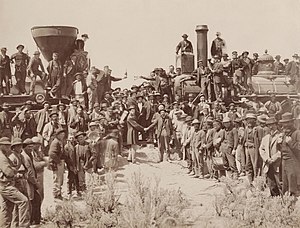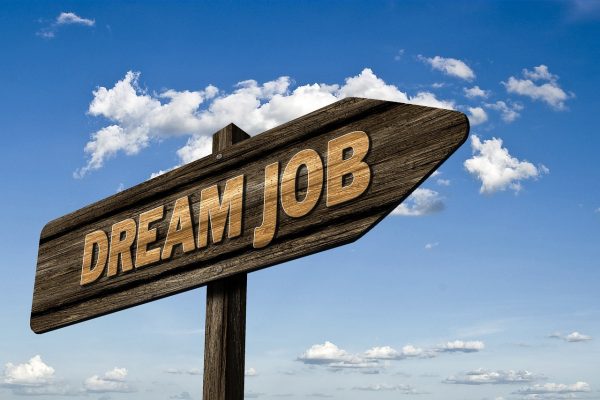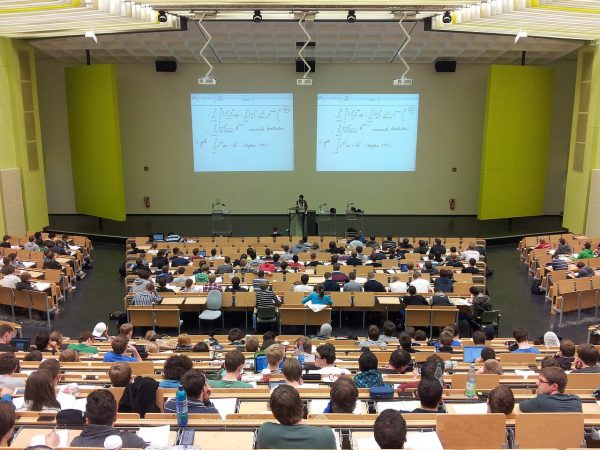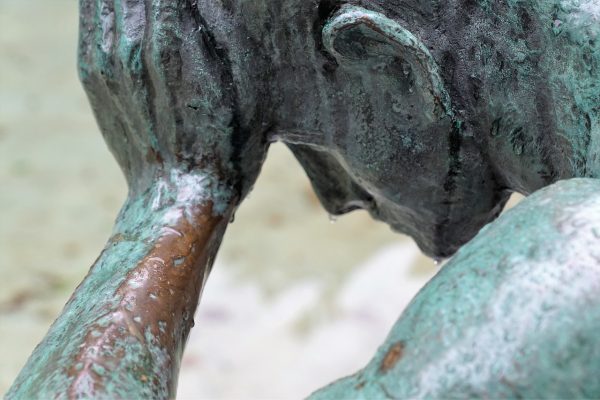The Transcontinental Railroad- “The Hell on Wheels”

The Transcontinental Railroad was a major turning point in the history of the Untied States of America. The construction of this great road took 6 long years between 1863-1869. The time was one of great reform and chaos.
In the 1830s, up until the late 1850s, people had already been traveling west in search of land, a new life, or gold in California. The journey itself was treacherous, a six-month overland journey across mountains, plains, rivers and deserts was extremely difficult- many died of cold in the mountains or caught a deadly disease, not to mention the Indian raids or wild animals that were a threat to those migrating. There was simply no efficient way to get to the western portion of the country. So, in 1845 a New York entrepreneur Asa Whitney came up with an idea of a railroad stretching from coast to coast, allowing easy travel and transportation of goods west. He presented it to Congress, stating it would be a federally funded institution.
Whitney tried to ratify it in Congress over the next couple of years. However, due to increasing sectionalism in Congress over the issue of slavery, the railroad idea was put in the idea pile. Then 1861, a young engineer named Theodore Judah had enlisted a group of investors in Sacramento to form the Central Pacific Railroad Company. He was also able to find a route through the Sierras (a mountain range in California) where the railroad could be built from the Pacific Ocean. He then headed to Washington, where he was able to convince congressional leaders, as well as President Abraham Lincoln, to pass the Pacific Railroad Act. What changed was that since the Civil War began, Congress was now united under one banner and had no issues on ratifying this railroad. This was in relation to the idea of Manifest Destiny. Which was the idea that it was God’s will that the U.S would stretched from coast to coast. After the signing of the Pacific Railroad Act it was decided, the Transcontinental Railroad would be built from two directions, by two companies. The Central Pacific from the west and the Union Pacific from the east. The Transcontinental Railroad began construction in 1863.
The Union Pacific
The Union Pacific railroad was led by Thomas Durant, and a company he created called Credit Mobilier ,to help with the railroad. Durant and Credit Mobilier heavily used the railroad to turn things in their favor. Durant bribed congressmen to suit his own gain, he also found loop wholes that gave him more money. The funding worked like this, the government gave the funds requested to build the road, but at the same time, for every mile of track placed, the people such as Durant or other members of Credit Mobilier would gain more money. So, Durant found a loop hole by building the track not in a straight line but as waves or a zig zag pattern. When Lincoln died in 1865, matters only got worse with Andrew Johnson, who either didn’t see the bribes occurring in Congress or he simply ignored them. The Credit Mobilier scandal, all in all, managed to steal over 19 million dollars out of the 75 million contracted to build the road- that was worth 53 million.
The actual building of the road was extremally difficult. The road was in danger of worker fights, Indian raids, disease, and horrible working conditions. On the side of the Union Pacific, the workers consisted of mostly Irish immigrants, free-slaves, and after 1865 Civil War veterans from both sides. The Irish were always afraid of losing their jobs to the freed slaves, and being newly arrived immigrants from Europe, it was either do the job or be replaced. The Free-Men came to the railroad, because now that they were free the only skills they had were to farm. However, they didn’t like the idea of staying on the plantations, so a number of them went north in search of jobs after the end of the war. Which brought them to the railroad. As for the war veterans, the greybacks (the soldiers from the Confederacy) came because after the end of the war, many of them were removed from service or landless. With no place to go, a portion of war veterans from the south went north to work on the railroad. The Union soldiers, or the blue coats, came because they were assigned to the area to deal with the increased Indian threat. The reason people from all over came to the railroad was to find jobs that it didn’t require any particular skill set.
The conditions in the Union Pacific were less then sanitary, the men lived in coaches of 4-5 stories high with 2 rows of beds from the floor to the ceiling. There was no ventilation, so the smell of the un-showered workers was preposterous. The workers worked through most of the week for six days, paid $1 per day, working 12-hour shifts. Following the railroad were boom towns, (small towns that were set up by people who worked on the road and later started living there). They contained saloons, and whore houses or brothels which both were the main source of entertainment for the men on their one day off. The railroad often experienced problems between the freed-blacks and the other men, because despite them being “free,” they were still considered as the lower class and were attacked with high prejudice. Many freed-blacks were killed in the boom towns, as well as whites who found themselves fighting each other. The railroad boom towns were correctly given the nick name Hell on Wheels. It was the definition of Wild West, death was everywhere. The most famous of the boom towns would be the town of Tombstone. It is famously depicted in many old western films.
The Central Pacific
The Central Pacific railroad, unlike the Union Pacific, wasn’t that corrupt and didn’t bribe as much. The Central Pacific was controlled by the so called Big-Four: Collis.P.Huntington, Leland Stanford, Mark Hopkins, and Charles Crocker. They were all influential business men, and they all contributed to building the Transcontinental Railroad. Huntington took charge on the front lines, similarly to Durant.
The workers on the Central Pacific originally were supposed to be mostly Irish immigrant like the Union Pacific, but due to the inability of contractor Charles Crocker to hold onto only 800 men at any given time, the Central Pacific needed to find a new labor force. They ended up with the Chinese. The Chinese had been coming over to the shores of California looking for gold since the Gold rush in the 1850s. Once Crocker and the other saw that they were actually capable of doing hard labor, they decided to send advertisers across the Pacific to recruit more workers, and it worked. The number of workers employed by the Central Pacific by 1868 was as high as 12,000 Chinese workers. They were comprising of at least 80% of the entire workforce. If the 20% (the Irish workers) refused to work, they would be threatened to be replaced by the Chinese- which would calm them down. The health and sanitary conditions were different between the Irish and the Chinese. The Chinese showered every day, drank tea (which was cleaned because it was boiled water), they didn’t drink alcohol, they were also punctual, willing and well behaved. They did their job, and they did it with no questions asked. The Irish on the other hand, similarly to how they were on the Union Pacific, were filthy, drunk, and rebellious.
The End
Both the Union Pacific and the Central Pacific had an issue while building, the Rocky Mountains. However, once they broke through, it was a straight path to meet. In between the two railroads after the Rockies were the Coal Fields of Ogden, Utah (also known as Promontory). Both Huntington and Durant had their eyes on it, because in short coal was the main source of fuel at the time. The coal fields were the jackpot. But, at the meeting with Ulysses.S. Grant to determine the terminus, it was decided that the Coal Fields in Ogden would go to the one who got there first. Unfortunately, it is unclear who won the race, as for the Coal Fields in Ogden weren’t given to either due to the Credit-Mobilier scandal, and the involvement of Brigham Young (and his fuel situation in Salt Lake City which was considered as the terminus). In the end, both met at Promontory, Utah on the same day, and a gold spike was nailed into the last rail. This great road was the symbol of industrialization and expansion. Built with blood and gore, this was the Transcontinental Railroad.










